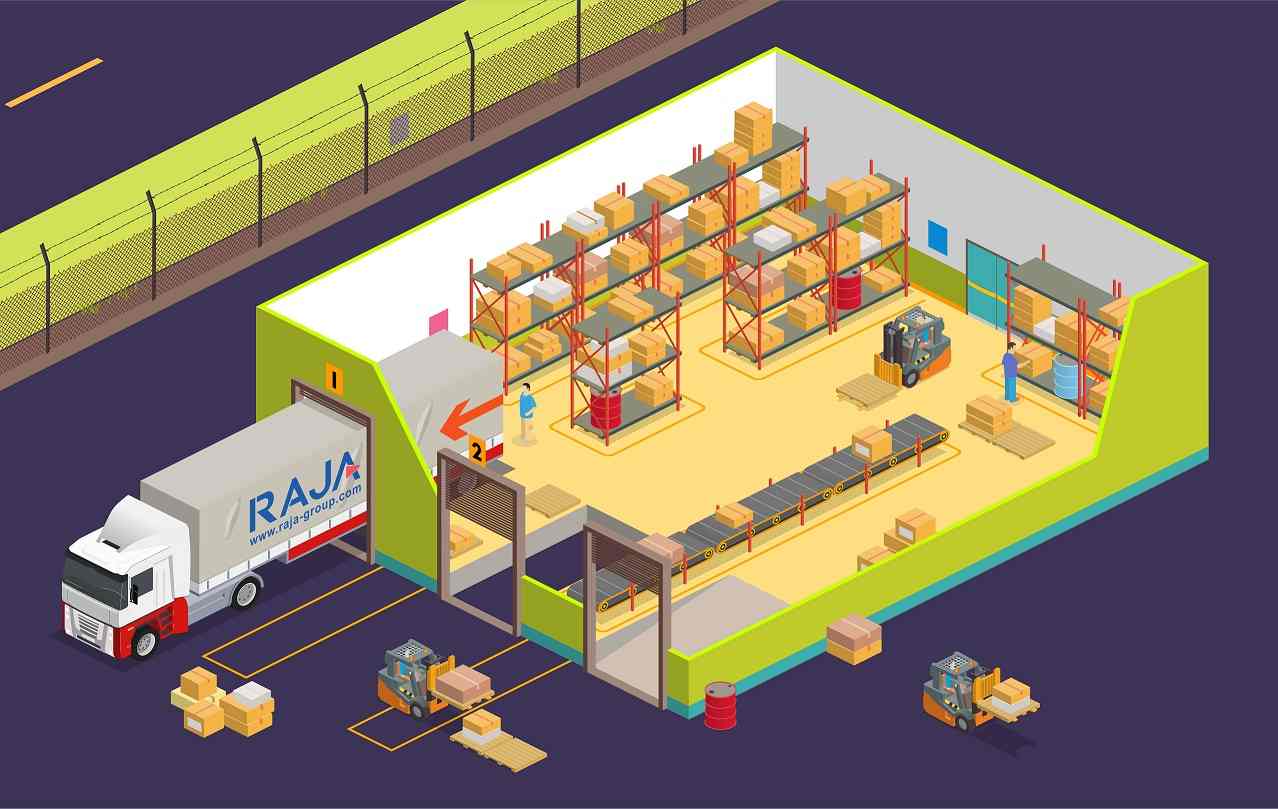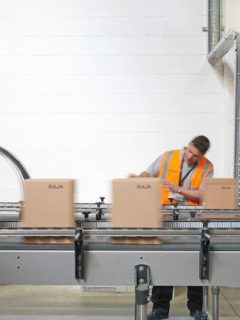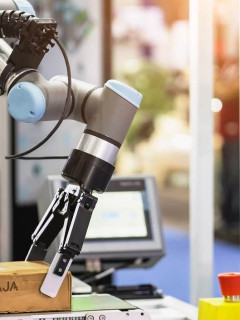The aim of the just-in-time logistics strategy is to supply goods at the precise moment they are to be shipped. Also known asjust-in-time, it is mainly used to reduce stocks in the warehouse and tooptimise production resources.Are you interested in just-in-time logistics for your supply chain? Find out how it works and what the benefits are in this article. Just-in-time
Just-in-time
logistics:
what is it? In just-in-time logistics, production keeps pace with demand. The goods or products are sent to production for direct use. The goods are produced only when the customer requests them: this is a just-in-time method. The just-in-time philosophy originated in Japan in the late 1940s in the automotive industry, with the aim of reducing the amount of stock. To ensure just-in-time logistics , all the
entities
of the production
chain
are involved
- In the case of large-scale distribution, the suppliers’ deliveries are made according to requirements, and then the redistribution phase is carried out accordingly in the various sales outlets. A coordinated reception of goods is set up so as not to delay the shipments.
- For a furniture factory: for each customer order, the factory orders the corresponding raw materials and produces each piece of furniture on demand.
what are the advantages of just-in-time logistics?
This organisationally demanding method offers various economic and practical advantages
- A reduction in the cost of storing goods.
- Reduced wastage of raw materials or finished goods that may expire or deteriorate during prolonged storage.
- Increased product quality with greater opportunity for customer customisation.
- Optimisation of storage, human and productionresources: they are used as needed.
- Greater flexibility and productivity: less scattering of tasks to be done.
just-in-time logistics is particularly well suited to the..
- for customisable items, such as in the automotive or aerospace industry
- for products with a short shelf life: food industry, pharmaceutical industry..
which strategy should you choose?
Push and pull flow are two opposite methods of managing the flow of goods in the logistics warehouse
|
Push flows |
Pulled flows |
|
| Characteristics | Goods are manufactured before they are sold. Items are produced upstream according to a forecast of the number of orders. Stocks are built up at each stage of production: MP, intermediary or semi-finished, finished products. | The production of items is committed to the order. The supply of raw materials is carried out according to real demand: there is little or no stock. |
| Advantages |
|
|
| Disadvantages |
|
|
5 keys to managing your just-in-time logistics
Ensuring a timely supply requires optimal coordination within the warehouse. Here are five tips for successful just-in-time logistics
- Coordinate the different departments of the company (supply, production and logistics departments, but also the goods transport department and the purchasing department) in order to maximise efficiency in warehouse operations.
- Accurately monitor stock entries and exits, thanks to a WMS – Warehouse Management System – but also thanks to a good product labelling system. To avoid overstocking, you need to evaluate sales forecasts in order to meet demand as closely as possible.
- Organise the warehouse with the right storage method.
- Synchronise information throughout the logistics chain, in particular with your suppliers or service providers involved in the production or distribution of your products.
- Streamline order picking: this phase of the supply chain must be particularly optimised to cope with the need to ship quickly.
good to know: there is suitable packaging to make your orderpicking process more fluid
 |
Instant assembly boxes and cases save time thanks to the automatic locking of their bottom by simply pressing on the sides. Closing is fast (adhesive strip), as is opening (tear strip). |
 |
This box with integrated film cushioning and storage space also facilitates packaging in a just-in-time environment |
you can also increase your packaging speed by using packaging systems and machines such as strapping machines and banding machines. Just-in-time logistics ensures that production lines and points of sale are constantly supplied. This strategy also minimises storage requirements. However, this logistical operation requires coordination along the supply chain. Just-in-time also reduces the risk of material loss and optimises space: your operational costs are thus reduced! Also discover on our blog: 6 new logistics technologies to consider for your warehouse.















